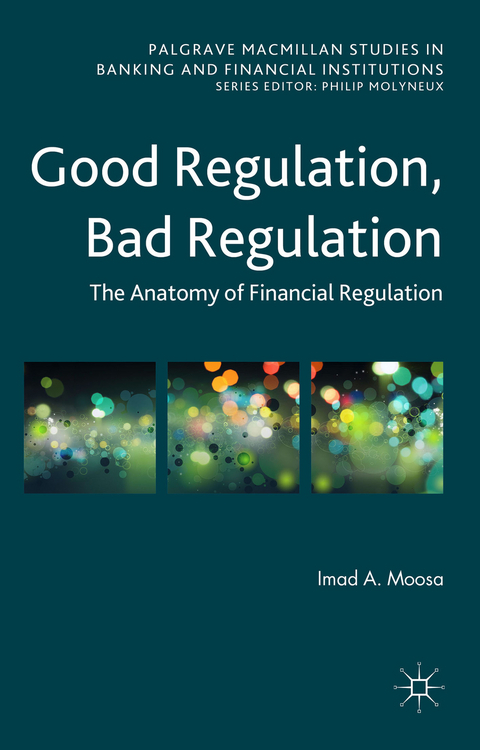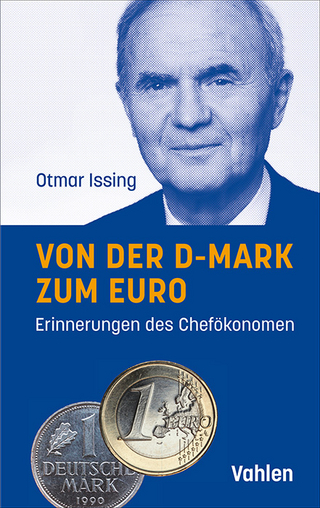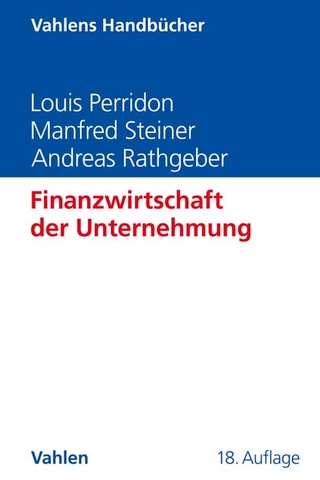
Good Regulation, Bad Regulation
Palgrave Macmillan (Verlag)
978-1-137-44709-8 (ISBN)
Since the 2007 2008 global financial crisis, there has been much debate about the role of financial regulation and the causes of financial instability in the industry. Where studies commonly question the value of a regulated rather than free market , this book focuses on the differentiation of 'good regulation' and 'bad regulation'.
This book highlights the need for financial regulation to combat corruption, and the integral link that exists between corruption and financial instability. The author evaluates the benefits and shortcomings of specific types of regulation, drawing on recent examples to illustrate each argument. The book presents compelling arguments for the regulation of leverage, liquidity, payday loans and securitisation; and debates the negative aspects of the regulation of short selling, and high-frequency trading, and of Basel-style banking regulation. The author argues that there is no free-market solution to financial instability, and rejects the idea of 'too big to fail'.
Imad Moosa is Professor of Finance at RMIT, Australia. He held previous appointments at Monash and La Trobe Universities, Australia, and the University of Sheffield, UK. Prior to working in academia he held professional positions at the International Monetary Fund and in investment banking. He has published 16 books and over 200 papers.
1. Definition and Theories of Regulation 1.1. Definition of Regulation 1.2. Forms of Regulation 1.3. The Public Interest Theory of Regulation 1.4. The Capture Theory of Regulation 1.5. The Special Interest Groups Theory of Regulation 1.6. Concluding Remarks 2. Arguments for and Against Regulation 2.1. Introduction 2.2. Avoiding Corporate Failure 2.3. Creature of the State 2.4. Market Failure 2.5. The Protection of Rights 2.6. Efficiency 2.7 Impeding Innovation 2.8. The Cost of Compliance 2.9. Circumvention of Regulation 2.10. Ineffectiveness 2.11. Corruption as a Justification for Financial Regulation 2.12. The Greed Game 2.13. Concluding Remarks 3. Regulation, Deregulation and Financial Crises 3.1. The Free Market Doctrine 3.2. Free Banking and Financial Laissez Faire 3.3. Regulation and Banking Efficiency: The Empirical Evidence 3.4. Deregulation as a Cause of Financial Crises 3.5. Concluding Remarks 4. Good Regulation: Payday Loans, Securitisation and Insider Trading 4.1. What is Good Regulation? 4.2. Payday Loans 4.3. Arguments for and Against the Regulation of Payday Loans 4.4. Securitisation and Derivatives 4.5. Insider Trading 5. Good Regulation: Leverage and Liquidity 5.1. The Leverage Ratio: Why Does it Matter? 5.2. Leverage as a Cause of the Global Financial Crisis 5.3. The Basel 3 Leverage Ratio 5.4. Arguments for and Against the Leverage Ratio 5.5. The Concept of Liquidity 5.6. The Role of Liquidity in the Global Financial Crisis 5.7. Arguments for the Regulation of Liquidity 6. Bad Regulation: Basel 1 and Basel 2 6.1. The Basel 1 Accord 6.2. From Basel 1 to Basel 2 6.3. A Critical Evaluation of Basel 2 6.4. Basel 2 and the Global Financial Crisis 6.5. Conclusion 7. Bad Regulation: Basel 2.5 and Basel 3 7.1. From Basel 2 to Basel 2.5 7.2. A Critique of Basel 2.5 7.3. Basel 2 to Basel 3 7.4. The Basel 3 Provisions 7.5. A Critique of Basel 3 7.6. The Verdict on Basel 3 and the Basel Culture 7.7. Conclusion 8. Bad Regulation: Short Selling 8.1. Introduction8.2. Some Preliminary Remarks 8.3. The Past and Present of Short Selling 8.4. Arguments for Short Selling 8.5. Arguments against Short Selling 8.6. The Regulation of Short Selling: A Critique 8.7. Naked vs Covered Short Selling 8.8 Conclusion 9. Bad Regulation: High-Frequency Trading 9.1. Regulating the Unknown 9.2. What is HFT? 9.3. The Proclaimed Profitability of HFT 9.4. HFT as the Cause of the Flash Crash 9.5. Arguments against HFT 9.6. The Case for and Against the Regulation of HFT 9.7. Conclusion 10. Bad Regulation: Too Big to Fail, Bail-out and Bail-in 10.1. Introduction 10.2. The Concept of TBTF 10.3. Evolution of the TBTF Doctrine 10.4. Arguments for TBTF 10.5. Arguments against TBTF 10.6. Dealing with the Menace of TBTF 10.7. Bail-out versus Bail-in 10.8. Conclusion 11. Concluding Remarks 11.1. Recapitulation 11.2. What is Good Regulation? 11.3. Corruption as a Cause of Instability and Crises 11.4. Banks Always Win 11.5. Taleb's Ten Commandments 11.6. Light at the End of the Tunnel?
| Reihe/Serie | Palgrave Macmillan Studies in Banking and Financial Institutions |
|---|---|
| Zusatzinfo | XIII, 247 p. |
| Verlagsort | Basingstoke |
| Sprache | englisch |
| Maße | 140 x 216 mm |
| Themenwelt | Naturwissenschaften |
| Technik | |
| Wirtschaft ► Betriebswirtschaft / Management ► Finanzierung | |
| Betriebswirtschaft / Management ► Spezielle Betriebswirtschaftslehre ► Bankbetriebslehre | |
| Wirtschaft ► Volkswirtschaftslehre ► Finanzwissenschaft | |
| Wirtschaft ► Volkswirtschaftslehre ► Makroökonomie | |
| ISBN-10 | 1-137-44709-5 / 1137447095 |
| ISBN-13 | 978-1-137-44709-8 / 9781137447098 |
| Zustand | Neuware |
| Informationen gemäß Produktsicherheitsverordnung (GPSR) | |
| Haben Sie eine Frage zum Produkt? |
aus dem Bereich


